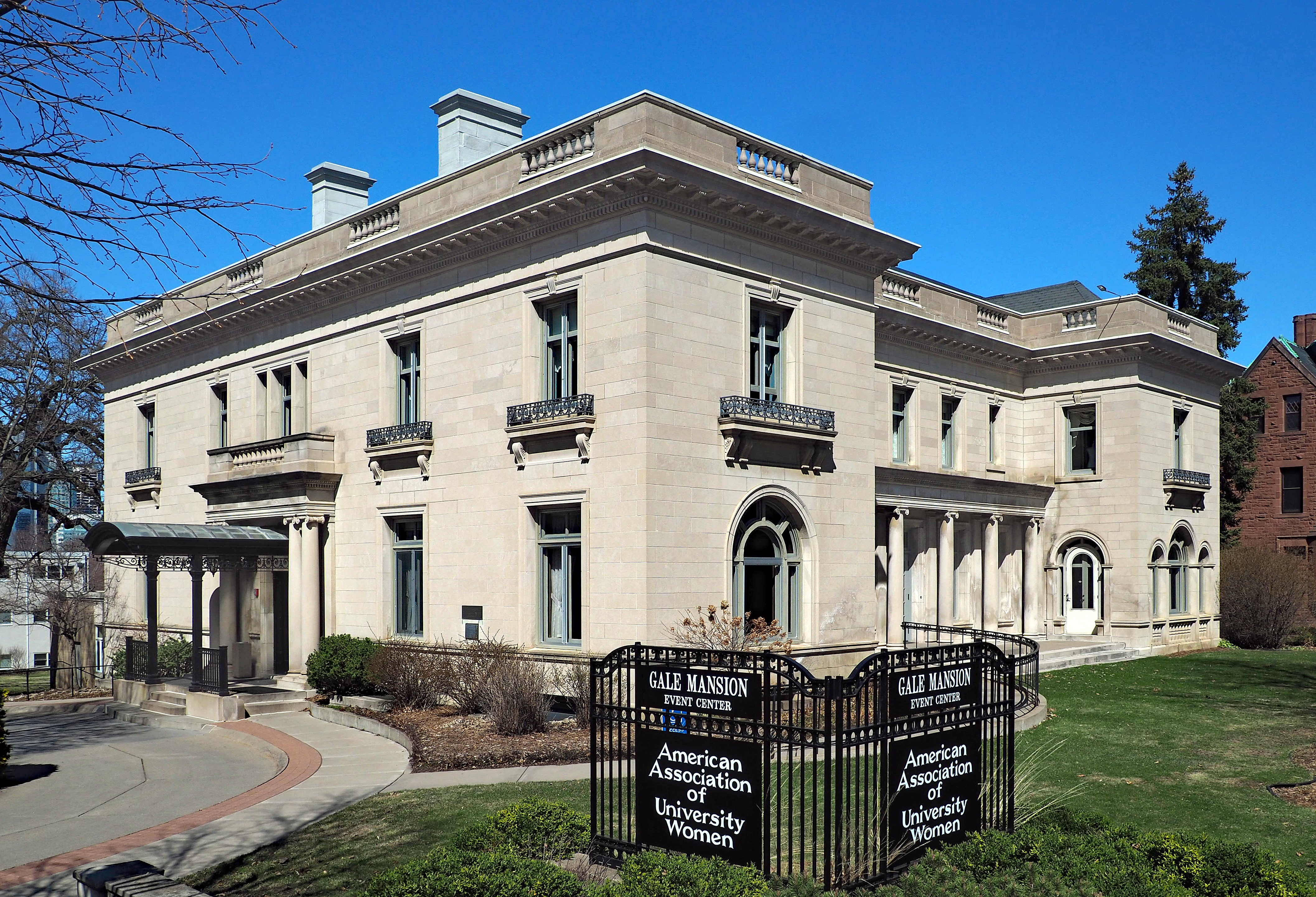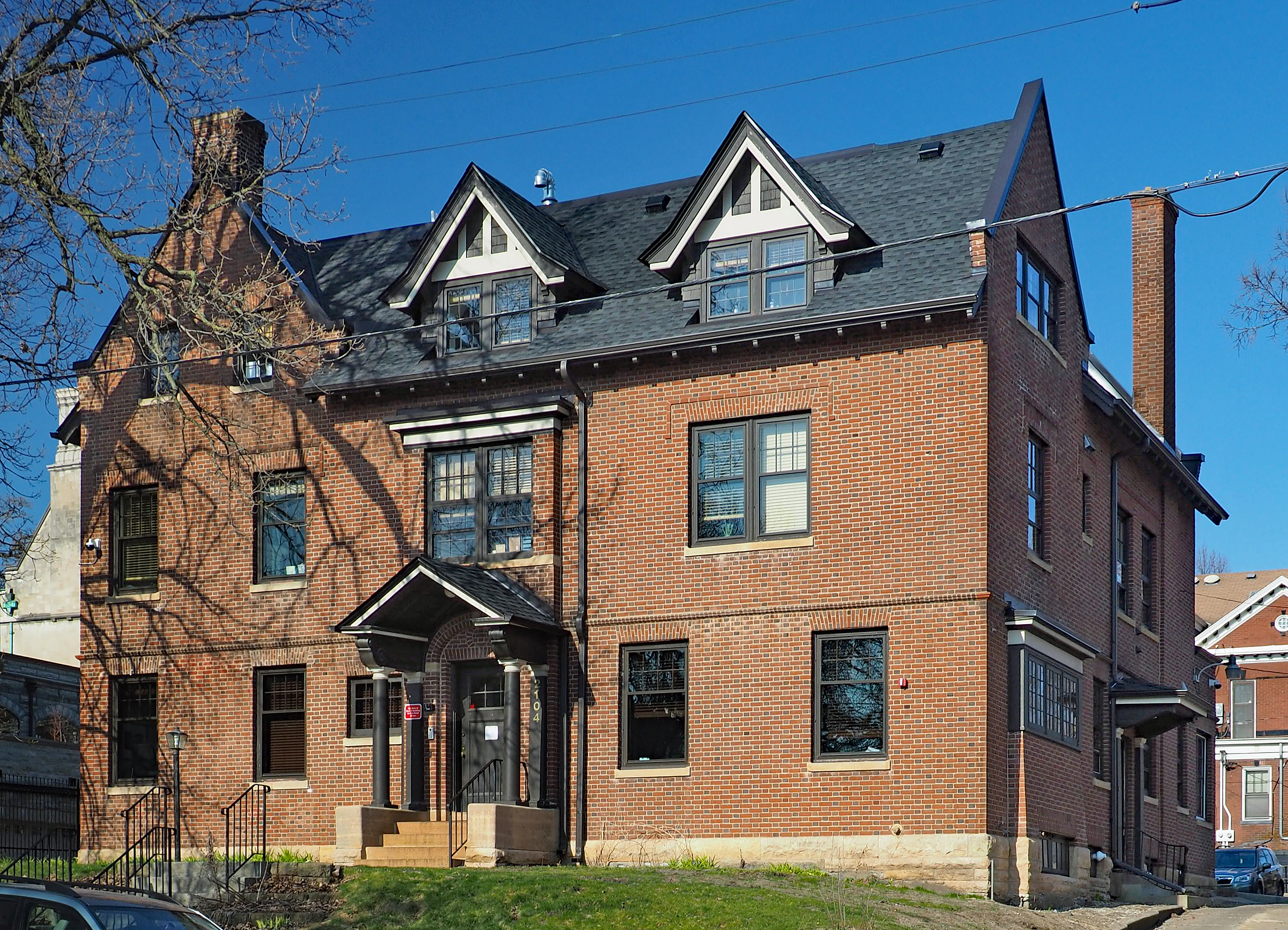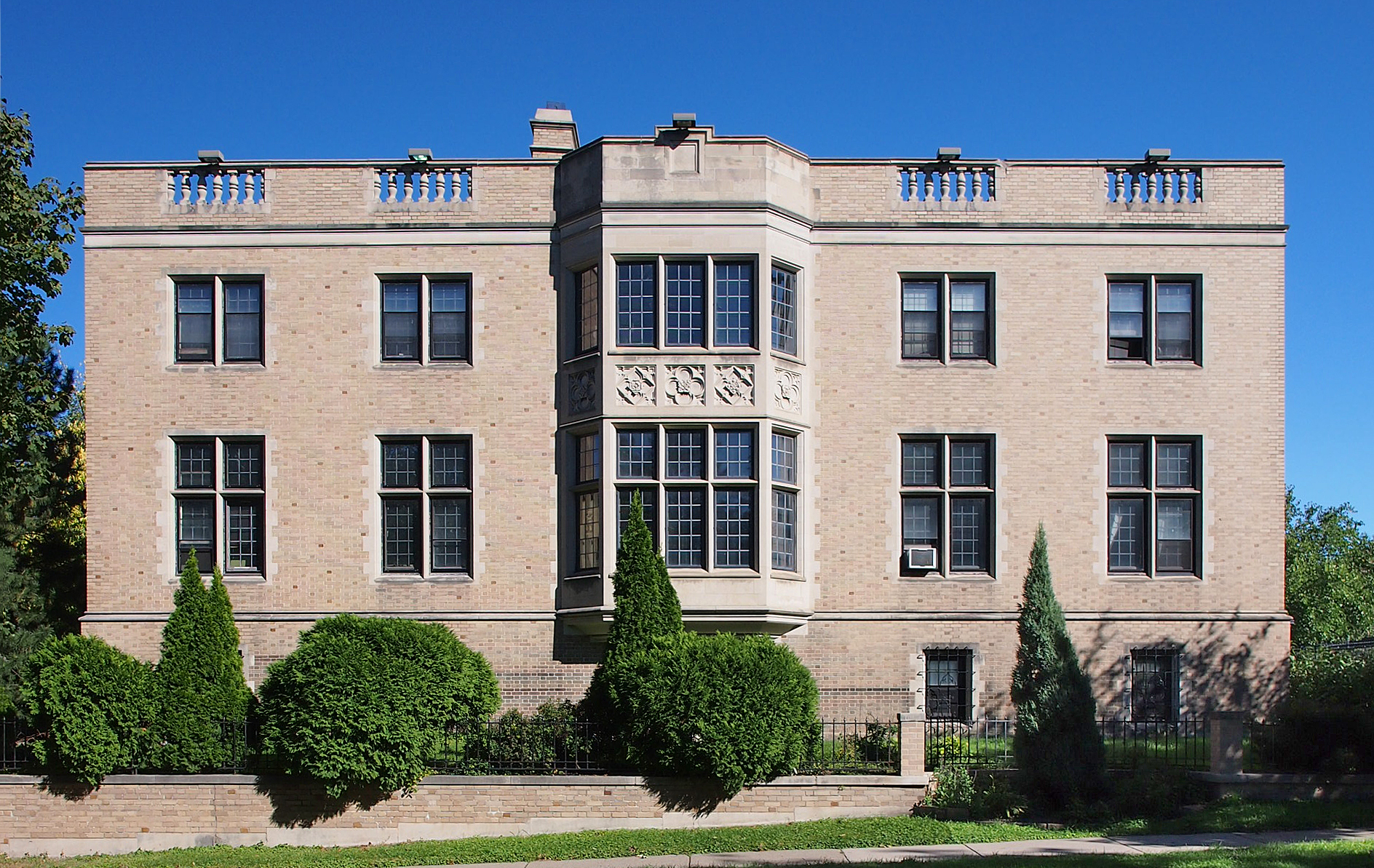Washburn-Fair Oaks Mansion District on:
[Wikipedia]
[Google]
[Amazon]
The Washburn-Fair Oaks Mansion District is a
 The Eugene Merrill House, at 2116 Second Avenue South, was built in 1884 by banker and lawyer Eugene Merrill, to designs by
The Eugene Merrill House, at 2116 Second Avenue South, was built in 1884 by banker and lawyer Eugene Merrill, to designs by
 The Gale Mansion, at 2115 Stevens Avenue South, was built in 1912 to designs in the
The Gale Mansion, at 2115 Stevens Avenue South, was built in 1912 to designs in the Gale Mansion history
/ref> The owner, Edward Chenery Gale, was the son of Minneapolis pioneer real estate broker Samuel Gale. His wife, Sara Belle Pillsbury, was a daughter of Governor
 The Alfred F. Pillsbury house, at 116 22nd Street East, was designed by prominent local architect Ernest Kennedy and built in a
The Alfred F. Pillsbury house, at 116 22nd Street East, was designed by prominent local architect Ernest Kennedy and built in a
 The Charles S. Pillsbury House, at 100 22nd Street East, is also in the
The Charles S. Pillsbury House, at 100 22nd Street East, is also in the
 The John Crosby House, at 2104 Stevens Avenue South, was built in 1904 for John Crosby, cofounder of the Washburn-Crosby Company, which later became
The John Crosby House, at 2104 Stevens Avenue South, was built in 1904 for John Crosby, cofounder of the Washburn-Crosby Company, which later became
 The Caroline Crosby House, at 2105 First Avenue South, was built by the daughter of John Crosby. The house is a brick
The Caroline Crosby House, at 2105 First Avenue South, was built by the daughter of John Crosby. The house is a brick
 The Luther Farrington House, at 2100 Stevens Avenue South, is also in the
The Luther Farrington House, at 2100 Stevens Avenue South, is also in the
 The Hennepin History Museum was formerly the George H. and Leonora Christian House. It was designed by local architects Hewitt and Brown using
The Hennepin History Museum was formerly the George H. and Leonora Christian House. It was designed by local architects Hewitt and Brown using
historic district
A historic district or heritage district is a section of a city which contains older buildings considered valuable for historical or architectural reasons. In some countries or jurisdictions, historic districts receive legal protection from c ...
in the Whittier neighborhood of Minneapolis, Minnesota
Minneapolis () is the largest city in Minnesota, United States, and the county seat of Hennepin County. The city is abundant in water, with thirteen lakes, wetlands, the Mississippi River, creeks and waterfalls. Minneapolis has its origins ...
, United States, centered on Washburn-Fair Oaks Park. The city of Minneapolis designated a district bordered by Franklin Avenue, Fourth Avenue South, 26th Street East, and First Avenue South. A smaller district, listed on the National Register of Historic Places
The National Register of Historic Places (NRHP) is the United States federal government's official list of districts, sites, buildings, structures and objects deemed worthy of preservation for their historical significance or "great artistic v ...
, includes seven mansions along and near 22nd Street East.
Overview
The development in the area was spurred by the desire of prominent families to move away from the central business district and to build larger and more elegant homes along what was the edge of town. Development began around the early 1870s and continued through about 1930. The houses within the district represent a number of popular architectural revival styles. The park itself is named for a now-demolished mansion known as Fairoaks. Built in 1884 by E. Townsend Mix, Fairoaks was one of the grandest Twin Cities mansions of its era. The house itself had 40 rooms and sat on a lavishly landscape lot two square blocks in size. It was built for William D. Washburn, a lawyer who moved to Minneapolis in 1857 and amassed a fortune in the family milling business. Washburn lived in the house until his death in 1912, at which point he willed the mansion to the Minneapolis Park Board. The park board ultimately found the mansion too expensive to maintain, so it was demolished in 1924. TheMinneapolis Institute of Art
The Minneapolis Institute of Art (Mia) is an arts museum located in Minneapolis, Minnesota, United States. Home to more than 90,000 works of art representing 5,000 years of world history, Mia is one of the largest art museums in the United State ...
building is located immediately south of the park. The site was formerly occupied by the Dorilus Morrison
Dorilus Morrison (December 27, 1814 – June 26, 1897) was an American banker, businessman, and Republican politician. He was the first and third Mayor of Minneapolis and was a member of the Minnesota Senate.
Life and career
Morrison was born i ...
house, built in 1858 by a lumberman who moved from Maine and became a businessman in Minneapolis, as well as the city's first mayor. Clinton Morrison agreed to donate the old family estate to the Minneapolis Society of Fine Arts. The house was demolished in 1911, and the Minneapolis Institute of Art, designed by the New York firm of McKim, Mead, and White
McKim, Mead & White was an American architectural firm that came to define architectural practice, urbanism, and the ideals of the American Renaissance in fin de siècle New York. The firm's founding partners Charles Follen McKim (1847–1909), Wil ...
was completed in 1915.
The neighborhood surrounding the mansion district is now home to many young professionals and artists.
Mansions in the district
Eugene Merrill House
 The Eugene Merrill House, at 2116 Second Avenue South, was built in 1884 by banker and lawyer Eugene Merrill, to designs by
The Eugene Merrill House, at 2116 Second Avenue South, was built in 1884 by banker and lawyer Eugene Merrill, to designs by William Channing Whitney
William Ellery Channing Whitney (April 11, 1851 – August 23, 1945) was an American architect who practiced in Minneapolis, Minnesota. He specialized primarily in domestic architecture, designing homes for many prominent Twin Cities famili ...
(1851–1945). The Merrill House is the oldest mansion in the district. Its rusticated red sandstone
Sandstone is a clastic sedimentary rock composed mainly of sand-sized (0.0625 to 2 mm) silicate grains. Sandstones comprise about 20–25% of all sedimentary rocks.
Most sandstone is composed of quartz or feldspar (both silicates) ...
, bold massing, polygonal tower and characteristic clustered fenestration are marks of the Richardsonian Romanesque
Richardsonian Romanesque is a style of Romanesque Revival architecture named after the American architect Henry Hobson Richardson (1838–1886). The revival style incorporates 11th and 12th century southern French, Spanish, and Italian Romanesque ...
architectural style. It is now owned by Rhett A McSweeney and is the offices of McSweeney/Langevin.
Gale Mansion
 The Gale Mansion, at 2115 Stevens Avenue South, was built in 1912 to designs in the
The Gale Mansion, at 2115 Stevens Avenue South, was built in 1912 to designs in the Renaissance Revival
Renaissance Revival architecture (sometimes referred to as "Neo-Renaissance") is a group of 19th century architectural revival styles which were neither Greek Revival nor Gothic Revival but which instead drew inspiration from a wide range o ...
style by Ernest Kennedy of Minneapolis. In 1855, the tract had been purchased for $50. Water company records indicate that several smaller houses once occupied the Stevens Avenue site./ref> The owner, Edward Chenery Gale, was the son of Minneapolis pioneer real estate broker Samuel Gale. His wife, Sara Belle Pillsbury, was a daughter of Governor
John S. Pillsbury
John Sargent Pillsbury (July 29, 1827 – October 18, 1901) was an American politician, businessman, and philanthropist. A Republican, he served as the eighth Governor of Minnesota from 1876 to 1882. He was a co-founder of the Pillsbury Co ...
. The house, now owned by the American Association of University Women
The American Association of University Women (AAUW), officially founded in 1881, is a non-profit organization that advances equity for women and girls through advocacy, education, and research. The organization has a nationwide network of 170,000 ...
, is faced in Bedford limestone. Many modern features were part of the design: a central vacuum-cleaning unit, a kitchen at ground floor level, rather than secreted in the basement, an intercom system. The house was centrally heated with a coal furnace; the decorative fireplaces were infrequently used. In the garden stands a fountain with the sculpture ''Boy with a Duck'' by Frederick MacMonnies
Frederick William MacMonnies (September 28, 1863 – March 22, 1937) was the best known expatriate American sculptor of the Beaux-Arts school, as successful and lauded in France as he was in the United States. He was also a highly accomplishe ...
.
.
Alfred F. Pillsbury House
 The Alfred F. Pillsbury house, at 116 22nd Street East, was designed by prominent local architect Ernest Kennedy and built in a
The Alfred F. Pillsbury house, at 116 22nd Street East, was designed by prominent local architect Ernest Kennedy and built in a Tudor Revival
Tudor Revival architecture (also known as mock Tudor in the UK) first manifested itself in domestic architecture in the United Kingdom in the latter half of the 19th century. Based on revival of aspects that were perceived as Tudor architecture ...
style and faced with locally quarried limestone with a dense, craggy look. Alfred F. Pillsbury, the only son of John S. Pillsbury, was an art collector who collected a number of Chinese jade
Jade is a mineral used as jewellery or for ornaments. It is typically green, although may be yellow or white. Jade can refer to either of two different silicate minerals: nephrite (a silicate of calcium and magnesium in the amphibole group of ...
s now on display at the Minneapolis Institute of Art
The Minneapolis Institute of Art (Mia) is an arts museum located in Minneapolis, Minnesota, United States. Home to more than 90,000 works of art representing 5,000 years of world history, Mia is one of the largest art museums in the United State ...
.
Charles S. Pillsbury House
 The Charles S. Pillsbury House, at 100 22nd Street East, is also in the
The Charles S. Pillsbury House, at 100 22nd Street East, is also in the Tudor Revival
Tudor Revival architecture (also known as mock Tudor in the UK) first manifested itself in domestic architecture in the United Kingdom in the latter half of the 19th century. Based on revival of aspects that were perceived as Tudor architecture ...
style. The house features a polygonal conservatory, bas-relief
Relief is a sculptural method in which the sculpted pieces are bonded to a solid background of the same material. The term ''relief'' is from the Latin verb ''relevo'', to raise. To create a sculpture in relief is to give the impression that the ...
carvings, and two statues of lions guarding the entrance gate. Charles S. Pillsbury was the son of Charles Alfred Pillsbury
Charles Alfred Pillsbury (December 3, 1842 – September 17, 1899) was an American businessman, flour industrialist, and politician. He was a co-founder of the Pillsbury Company.
Education and early business career
Pillsbury was born December ...
, the founder of the Pillsbury Company
The Pillsbury Company is a Minneapolis, Minnesota-based company that was one of the world's largest producers of cereal, grain and other foodstuffs until it was bought by General Mills in 2001. General Mills brands consist of Annie's, Betty Croc ...
. The house is now owned by an organization that provides services for the blind.
John Crosby House
 The John Crosby House, at 2104 Stevens Avenue South, was built in 1904 for John Crosby, cofounder of the Washburn-Crosby Company, which later became
The John Crosby House, at 2104 Stevens Avenue South, was built in 1904 for John Crosby, cofounder of the Washburn-Crosby Company, which later became General Mills
General Mills, Inc., is an American multinational manufacturer and marketer of branded processed consumer foods sold through retail stores. Founded on the banks of the Mississippi River at Saint Anthony Falls in Minneapolis, the company orig ...
. The house was designed in Colonial Revival
The Colonial Revival architectural style seeks to revive elements of American colonial architecture.
The beginnings of the Colonial Revival style are often attributed to the Centennial Exhibition of 1876, which reawakened Americans to the archi ...
style by William Channing Whitney
William Ellery Channing Whitney (April 11, 1851 – August 23, 1945) was an American architect who practiced in Minneapolis, Minnesota. He specialized primarily in domestic architecture, designing homes for many prominent Twin Cities famili ...
.
Caroline Crosby House
 The Caroline Crosby House, at 2105 First Avenue South, was built by the daughter of John Crosby. The house is a brick
The Caroline Crosby House, at 2105 First Avenue South, was built by the daughter of John Crosby. The house is a brick Georgian Revival
Georgian architecture is the name given in most English-speaking countries to the set of architectural styles current between 1714 and 1830. It is named after the first four British monarchs of the House of Hanover—George I, George II, Georg ...
structure. The house now serves as headquarters for the Institute for Agriculture and Trade Policy
The Institute for Agriculture and Trade Policy (IATP) is a non-profit organization, non-profit research and advocacy organization that promotes sustainability, sustainable food, farm, and trade systems. IATP has offices in Minneapolis, Minnesota, W ...
.
Luther Farrington House
 The Luther Farrington House, at 2100 Stevens Avenue South, is also in the
The Luther Farrington House, at 2100 Stevens Avenue South, is also in the Georgian Revival
Georgian architecture is the name given in most English-speaking countries to the set of architectural styles current between 1714 and 1830. It is named after the first four British monarchs of the House of Hanover—George I, George II, Georg ...
style. The building is currently known as the Hartwell Center for Mentoring, named after John and Lucy Hartwell (also related to the Crosby family) who purchased the building and donated it to the Minneapolis Jaycees, which in turn sold it to Bolder Options, a locally based youth mentoring program.
George H. and Leonora Christian House / Hennepin History Museum
 The Hennepin History Museum was formerly the George H. and Leonora Christian House. It was designed by local architects Hewitt and Brown using
The Hennepin History Museum was formerly the George H. and Leonora Christian House. It was designed by local architects Hewitt and Brown using Renaissance Revival
Renaissance Revival architecture (sometimes referred to as "Neo-Renaissance") is a group of 19th century architectural revival styles which were neither Greek Revival nor Gothic Revival but which instead drew inspiration from a wide range o ...
elements such as a balustraded
A baluster is an upright support, often a vertical moulded shaft, square, or lathe-turned form found in stairways, parapets, and other architectural features. In furniture construction it is known as a spindle. Common materials used in its con ...
roof. George Christian was the manager of the Washburn-Crosby milling company in the 1860s and helped to perfect the "new process" of milling hard spring wheat to make a pure white flour. This process made Minneapolis flour highly competitive with flour from other mills. The building now houses the Hennepin History Museum. The building is not listed on the National Register, but is part of the local historic district.
Before the project was finished Christian, his wife, and his son died, leaving Carolyn (also spelled Caroline) McKnight Christian, the younger Christian's widow, seven servants, and three foster children as the only occupants for the next forty years.
References
{{National Register of Historic Places in Minnesota Historic districts on the National Register of Historic Places in Minnesota Historic mansion districts Houses in Minneapolis Houses on the National Register of Historic Places in Minnesota National Register of Historic Places in Minneapolis Neoclassical architecture in Minnesota Renaissance Revival architecture in Minnesota